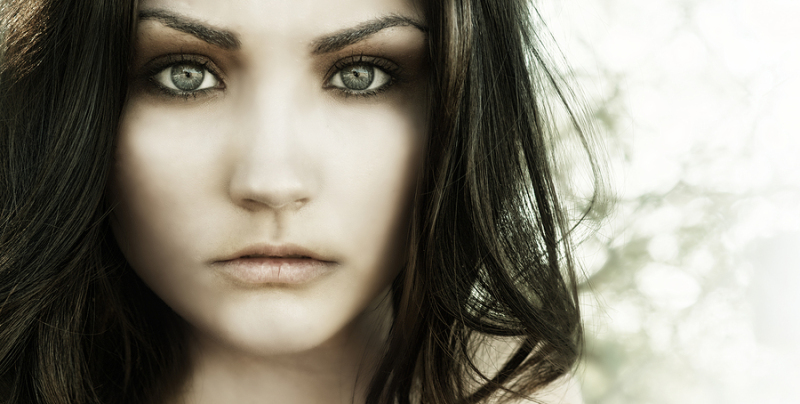In a recent blog, I touched upon the problem of unlikeable characters. I mentioned that I stopped reading a published book because I didn’t like any of the characters. So when do I think a reader will keep reading about unlikeable characters? I’d say one or more of the following will save a story:
1.) The protagonist has been victimized and the reader can root for her to overcome being a victim.
2.) The unlikeable character will grow and be redeemed.
3.) The reader can enjoy seeing an unlikeable character get a comeuppance. This may be wish fulfillment if the unlikeable character reminds the reader of a real-life counterpart.
4.) The unlikeable character can make mistakes and the reader can see the bad consequences, thereby teaching the reader or confirming the reader’s suspicions and/or values.
5.) The plot makes the fact of a group of unlikeable characters necessary.
6.) The plot is so intriguing, and/or answers a question so urgent, that the characters are just players swept up in the circumstances so their personalities are actually less important than the plot.
One or more of these factors just might make me a fan!
Your turn:
Have you read books with any of these scenarios?
What villain did you learn from?
What victim did you enjoy rooting for?



 Joy to the (Writer’s) World!
Joy to the (Writer’s) World!
It’s a cliche to say that we should look for the good in every individual – or, by extension, any character.
Not always easy. Might be hard to apply in the case of, say, Ilse Koch.
To me, an unlikeable character can hold my interest if he or she contains a measure of tragedy – good subsumed into bad. The one-dimensional “bad” character (paging Frau Koch, bitte!) is really a prop.
A true ‘character’ has to have at least the potential for growth and redemption – and the reader has to see it. A lady who makes lampshades out of human skin is pretty much beyond the pale, though, no matter what a writer does.
I’m personally uncomfortable with setting up a straw man for a satisfying comeuppance. It panders to the worst in us; the desire to vicariously experience the thrill of vengeance.
There is NOTHING satisfying about revenge in real life, and I know this from experience. The saying “before setting out on revenge, be sure to dig two graves” is terribly true.
My rule in writing unlikeable characters is to give them at least one gloriously redeeming feature. For instance, in writing about a murderous terrorist, I set him up to protect a female hostage from rape at the hands of two of his cohorts. I want my readers to be able to relate to him, in at least that small way.
I like this thought provoking question! I’ve recently finished Amy Matayo’s “Sway” and Kate, one of the main characters, definitely fits in with the #2 scenario. She is an atheist with attitude. Although she is fairly unlikeable (especially with her pink coat!), I was rooting for her from the beginning to change her beliefs and of course fall for Calab, the kind pastor with the bad boy exterior.
The second book that comes to mind is “Necessary Lies” by Diane Chamberlain. This book is about the sterilization that occurred in the 1960s. If young women were poor, sick, or in some way unfit to be a mother, their rights to reproduce were taken away by the government. This was a very unlikeable, painful subject matter. Ivy Hart, is a young poor girl who a social worker takes under her wing in order to rescue her from being sterilized. She is the victim that you love to root for and that yes, does come out on top in the end. I’m a fan of happy endings! 🙂
This probably sounds bad, but if I don’t like the characters, I won’t keep reading the book. I’ve got to like at least one of the main characters.
I also like stories that end happily ever after. Real life can be hard enough, I want to enjoy my fiction.
I hope you all have a wonderful Christmas!
Oh, Jackie, that’s TERRIBLE! How could you SAY that?
I agree completely, and I like happy endings, as well. They lift me up, give me hope.
Michener’s best book (by his own admission), “The Bridges At Toko-Ri”, has great, electrifying writing, but the ending is not happy…and it stayed with me. I’ll never read it again.
I’ve had friends tell me that they had trouble getting through Francine Rivers’ Redeeming Love, because they were finding it hard to like Angel. That’s one of my favorite books though. I think she fits into #1 and #2.
I personally enjoy stories of redemption, so I have the tendency to enjoy reading about and writing characters who start out vapid or self-absorbed or in other cases, flat out “villain-y” and then as the story goes, I try to find a realistic road to a deeper, more empathic character, a road to redemption.
I love stories where first impressions prove me wrong. Even in TV shows, I am drawn to characters who started out as somewhat of an antagonist then eventually overcame their own weaknesses and triumphed. The fictional character, Tyra Collette, from the TV show, Friday Night Lights, comes to mind. I can still remember what I felt like when she got into college.
I guess all of that comes from me being the kind of person who rarely makes a good first impression, so I’ve always appreciated people who took the time to get to know me better. I tend to treat characters – and hopefully, people – the same way.
I like that, Andrew. Hope is going to be my word for 2015.
Hope’s a good word for 2015.
Mine isn’t quite as succinct – it’s “Hirihokenten”.
Actually, I’m cheating. Hirihokenten is a Japanese transliteration of the words of a Chinese philosopher.
It means, “it is important to consider debt; considering death is unimportant.”
Hirihokenten was the motto of Kusunoki Masashige, who took his life after the Battle of the Minato River (Minatogawa) in 1366. He’s revered in Japan, an example of resolve and fealty.
It’s lesser-known that, on the eve of his final departure, his wife wrote what has to be the most touching testimonies to marriage ever penned:
“I wish that time unrolled as a spool of thread, so that the past might become the present.”
I truly enjoy pitting a character you’ll love against a character you’ll hate. It’s just plain fun. 🙂
So why do we love happy endings, Jackie and Andrew? Because no matter what befalls us in this world we have a happy ending coming!!
I read some of Sarah Sundin’s books lately and Kim Vogel Saywer’s -both WWII stories and both with redemptive issues.
I agree with Teresa, my enemy in my WIP has been fun to create.
Character driven books seem to be my fav. I hope those who read mine will love and love to hate mine, too!
The book GONE GIRL has two unlikeable main characters, the woman and the man, but it was a best seller because of your point #6 … an intriguing plot.
Though it’s a TV show not a book, this immediately reminded me of why I stopped watching the new series How to Get Away with Murder after 2 episodes. I thought the characters were horrible people, with one minor exception, and I didn’t care what happened to them.
Still, give me a reason — a “save the cat” moment, if you will — to like your unlikable character and I might give still give your book a shot.
Reading through the comments, I’m reminded that so much of “likeability” has to do with personal preference. For example, I liked the protagonist of Amy Matayo’s “Sway” from the beginning, and only felt more sympathetic toward her as the book progressed.
On the other hand, some books that people rave about have had so-called likeable characters that I felt were duller than dishwater and I simply couldn’t finish the book. For me, interesting is always more important than nice.
To each his own, I suppose. That’s the blessing of an overflowing TBR stack… there’s always another one to be read!
These are fabulous tips, Tamela. I can see how these would clear up a bad case of “unlikeable character” in a jiffy.
Another thing that can make me like an unlikeable character is when s/he helps the good guys, usually rather begrudgingly, fight against a greater evil. This probably fits within tip number two or six above.
A recent example of this I saw in the film How to Train Your Dragon 2 (Yes, I still watch animated movies. 😉 My brother is a graphic artist and we love the comedy and CGI in those films.) One of the characters I like to call a sub-villain was transformed by the end of the movie. He had strong motivation to work for the bad guy, but once he discovered the power of loyalty and friendship on the “good side,” he started helping our favorite characters.
I think Joss Whedon’s Loki is one of the most loved and most conflicted villains I’ve seen of late. He may well fit within every one of the tips above. At this point in the Avengers stories, he’s still volatile and manipulative, but he’s started helping the good guys, so we love him even more for the spark of hope that his character may one day be redeemed.
I haven’t seen The Hobbit: The Battle of Five Armies yet, but I’m looking forward to what we’ll see with those characters. It’s rumored that some of the best-loved will turn “bad” or unlikeable, and others may be killed. One interesting way to deal with not-so-evil-but-unlikeable characters is to kill them off, then have their previous actions–and their death–affect the other characters for good throughout the rest of the plot. Builds sympathy, especially if the other characters grieve their loss.
Great post, Tamela. Gets me to thinking.
That is why I don’t like (most of) Dickens’ books. Only his villains have spines, and good and bad alike spend their lives trudging through an endless world of sooty black and dirty brown. No thank you!